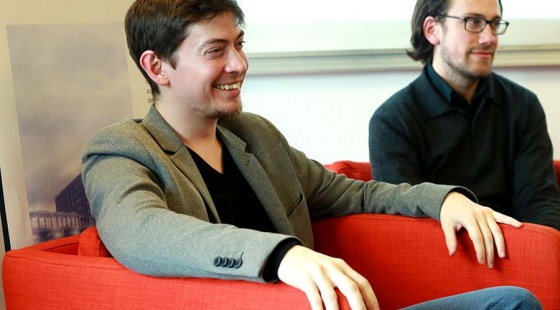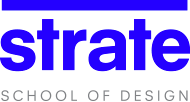
Let’s talk about the genesis of the project: what was the basis for the desire to create this master's degree?
The project was born out of a very simple observation.
Today, there is no training with an operational focus that truly takes into account the perspectives opened up by the Anthropocene. The usual responses are either to tone down the diagnosis in order to continue to promote levers for action that have nonetheless demonstrated their ineffectiveness (CSR, sustainable development, etc.), or to stick to a purely theoretical education with no transformational aim.
We start from the premise that we must, on the contrary, combine these two aspects - operational and academic - in order to achieve a convergence between a precise and by no means euphemistic diagnosis of our global situation and the search for operational levers that have been entirely rethought with regards to the horizon of ecological redirection.
How does this diploma respond to current issues?
We have two imperatives: to learn to live differently on Earth but also to inherit a Technosphere five times heavier than the human biomass that depends on it... In other words, if we are to transform our relationship to the non-humans who keep the Earth habitable, we must also inherit the modernity, industry and infrastructure of the world's organizations, which we know are no longer tailored to the Earth System and whose trajectory has been disrupted by the Anthropocene. Nevertheless, we also depend on this Technosphere for our survival, a Technosphere to which, whether we like it or not, we are "attached". The challenge is therefore to find ways to shut down or reintegrate within planetary boundaries what is currently destroying any possibility of a viable future, where the conditions for our subsistence among the entities that make the Earth habitable would be maintained. Our training course is therefore extremely concrete by insisting on the need to put our hands in the dirt of infrastructures, law, economic models, technology, management, etc..
Students are increasingly involved in social and societal initiatives and are seeking to give meaning to their actions. Is this the audience you are targeting?
It's perfectly normal. The students who started their studies in 2015 and are finishing up this year (for those who have gone as far as the Master's degree), started their studies with the COP 21 and are finishing them in the middle of the Coronavirus crisis! 2015 was a pivotal date in view of the media coverage of the issues surrounding the Anthropocene but also, in France in particular, the collapse movement. A whole generation has thus become increasingly aware of these issues. Moreover, this generation knows that it is inheriting a world whose habitability is no longer guaranteed in the near future. It was therefore high time to offer young people prospects for action, since they no longer necessarily wish to continue in the direction in which their studies had led them until then, while at the same time wondering about the means of action open to them in view of the intensity of the difficulties looming on the horizon. Our Master of Science intends to solve this difficult equation.
We are targeting this public in "immediate reconversion" but also professionals who have reached the same stage of reflection after having led a first career in companies or institutions.
For which companies?
All companies and institutions are concerned. There is no area that escapes the consequences of the Anthropocene (from global warming to the rise of the oceans, the fall in biodiversity, the recurrence of pandemics or the difficulty of accessing energy and certain raw materials). Whether it is a question of dealing with the intrusion of the Anthropocene into the heart of organizations and institutions or the coercive measures that will inevitably be taken sooner or later by States: in all cases, strategic reflection is required.
What kind of training: how to train for the anthropocenic transition? What articulation between the apprehension of contexts, the study of systems, the conception of organizations through design and professionalization?
The training we offer is based on an articulation between several scales, micro, macro and meso, in order to give our students the ability to move from one to the other with relative ease (which is not obvious as the tools, methods and limits of these scales are quite heterogeneous).
The first step will be to give students the keys to grasp situations of uncertainty, exploratory ones, which are not immediately understood and which therefore require the deployment of inquiries on a relatively micro scale. This is an opportunity to mobilise both ethnography and design to combine investigation, documentation and the ability to analyse, restitute and share the results of their investigations.
In contrast, we will also offer courses aimed at understanding the Anthropocene in its very encompassing dimension, introducing to climate models, of course, but also to collapse models (World 3 type) or even more broadly to complex systems. This is a crucial element in understanding how science takes on a very broad scale - with all the limits that this implies: not all models are predictive, for example, and it is not easy to give a rigorous reading of them, and this presupposes a good understanding of how they were produced, their purposes and their limits.
We will also offer theoretical courses, again on a macro scale, so as to apprehend the Anthropocene according to several dimensions: historical and geopolitical, economic, institutional, managerial and technical. Our goal here is to share with our students an in-depth analysis of this new epoch and its triggers in order to provide them with a strong intellectual framework and a height of vision.
We will then reinvest the micro dimension by proposing an introduction to design, less as a standard practice than as an ability to do, which significantly distinguishes this discipline from its counterparts today. My experience has taught me that design students have a capacity to undertake very concrete actions that is hardly found in other fields. Given the aim of the degree, namely to invent the levers of action that are currently lacking to bring organisations and institutions to the ground, it seems fundamental to share this know-how with students from other disciplines, or even to designers who would have remained confined to very classical and compartmentalised approaches (product design, service design, etc.).
The fifth module, towards which the previous ones do converge, is set at the meso scale, synonymous for us with the scale most likely to accommodate effective action in the immediate future (in contrast to the micro scale, of very local resilience, or the macro scale, of national or international policy). For us, the meso scale is above all the scale of organisations (especially businesses) and institutions (local authorities for example). It is on this scale that we will try to identify and produce, through promotion, the levers of ecological redirection that are currently lacking (design of renunciation protocols, ecological redirection of organizations, design of commons, negative commons, new economic models, public policies within global boundaries and democratic limits, etc.).
Finally, I must make it clear that all these teachings will in no way be an end in themselves. They are above all intended to train our students to enable them to deal with a concrete commission in terms of ecological redirection, as part of their internship and dissertation. By soliciting organizations and institutions that will send us their commission (which the students will obviously be free to reappropriate and reformulate), we intend to allow our students to prove the validity of the training they will receive and thus facilitate their integration within their professional environment and put them on their feet if they wish to set up their activity.
The funding model?
We will offer companies the opportunity to place commission with us and, in return, to make donations to foundations, which can then offer scholarships to our students. We would also like to organise group workshops on a more service-oriented basis, which will also help to reduce our students' tuition fees while providing them with additional work experience. I should point out in this respect that professionalization is one of the six modules of the training programme in its own right.
How long is this training course?
8 months of courses and 4 to 6 months of internship (i.e. between 12 and 14 months in total). With the possibility to follow some courses remotely even if the face-to-face will be fully maintained so as to allow various profiles (including people working in parallel, etc.) to follow the training by being as flexible as possible while having the means to anticipate a possible lockdown or any event with a similar impact.
What trainers?
Researchers from all disciplines and recognised professionals from the world of design (sometimes straddling both categories): the members of Origins at the origin of the project (myself, Diego Landivar and Emmanuel Bonnet but also Emilie Ramillien and Ulises Navarro Aguiar), Nicolas Nova (Near Future Lab), Matthieu Duperrex (Urban too urban), José Halloy (University of Paris), Antoine Hennion (Mines ParisTech), Yves-Marie Abraham (HEC Montréal) Serge Fenet and Guillaume Mandil from the STEEP team in Grenoble (Inria), Sylvia Fredriksson (Oxamyne), Geoffrey Dorne, Gauthier Roussilhe (RMIT), Nicolas Roesch, Rémy Bourganel, Xavier Fourt from Bureau d'études, Marie Cécile Godwin Paccard and Thomas di Luccio for the Lyon-based Common Future(s) collective, Laura Pandelle for the 27th region, Nicolas Henderson and Quentin Lefèvre for the TAMA collective, Patrick Degeorges, Lalya Gaye, Grégoire Marty, Emile Hooge (Nova 7), Elodie René (University of Northampton), Victor Petit (UTT), Thomas Désaunay, Manuel Boutet and Aura Parmentier (Université Côté d'Azur). Without forgetting other speakers who will intervene in the course additional workshops, design with regards to the profiles of our students, current events and aimed at covering points that we could not cover in class because of lack of space.
There is also a strong regional anchoring with numerous speakers from region, whether they come the Puy-de-Dôme, Allier, Isère, Cantal or Lyon.
What types of profiles are expected for this Master of Science?
Through design, we wish to bring together teachings ranging from the physics of complex systems to permacultural design, including dismantling engineering, the design of communal areas and geohistory. This means that we address a wide range of profiles, from engineering, management and design schools, of course, but also from political science, the humanities and social sciences and the so-called “hard” sciences.
In which field and towards which professions will we find future MSc graduates?
There are two ways to answer this question. From the point of view of existing professions, our students will be positioned in a niche occupied today by CSR managers. But the point is to anticipate the necessary transformations to come by collectively bringing out new profiles and new positions with the support of our two schools, the Conférence des Grandes Ecoles which certified the diploma and our 18 partners (a number that is and will be growing). CSR managers were somewhat caught between the hammer and the anvil, between the environmental diagnosis on the one hand and the lack of decision-making and operational levers available to them within organisations on the other. Our training aims to make companies and communities acknowledge the need to integrate profiles that are both operational and inserted in decision-making bodies so as to rethink their strategy because there is no other choice. The consequence of "Business as Usual" is nothing less than the "strategic void", which will very quickly come up against walls.
